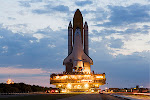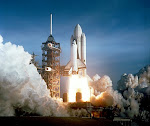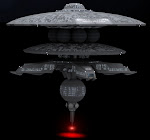
Often cited as the most-viewed photograph of all time, the view of Earth's disk from Apollo 17 is emblematic of our home planet as an isolated blue marble. Despite the ubiquity of the Blue Marble, few people realize NASA has viewed the Earth since the agency's creation. In this talk Rob Simmon of NASA's Earth Observatory will discuss the history of NASA's evolving views of Earth, from the first weather satellites to the latest climate missions, from the orbit of Mercury to the edge of the Solar System. He will also describe the techniques used to build images that simulate the view from space, including cloud-free global composites and a picture of the Eastern Hemisphere from NASA and NOAA's newest Earth-observing mission, Suomi NPP. Speaker: Robert Simmon, NASA's Earth Observatory
Length: 20 minutes
1 - 2 p.m. EDT -- See the broadcast presentation titled: "Beautiful Earth Multimedia Performance and Science Dialogue," on a big screen at the NASA Goddard Visitor Center Auditorium.
Join us on a musical and visual tour of Earth from space with interactive discussions through the Beautiful Earth program. Director and Musician Kenji Williams performs the BELLA GAIA (www.bellagaia.com) multimedia show along with interactive discussions by NASA Earth Scientist Thorsten Markus and Native American Science Educator Jim Rock. The Beautiful Earth program highlights Earth's water in all of its forms: liquid, solid, and vapor, from the western scientific, indigenous, artistic, and multi-cultural points of view. The program simulates spaceflight for the public and reminds us of the beauty and inter-connectedness of Earth’s life systems. Students and teachers from across the country will interact live with the program.
Three days of NASA activities will also be held on the National Mall in Washington from April 20 through April 22. The agency's involvement includes free activities and exhibits open to the public.



















